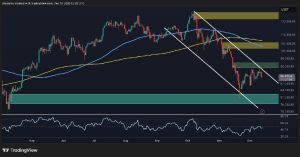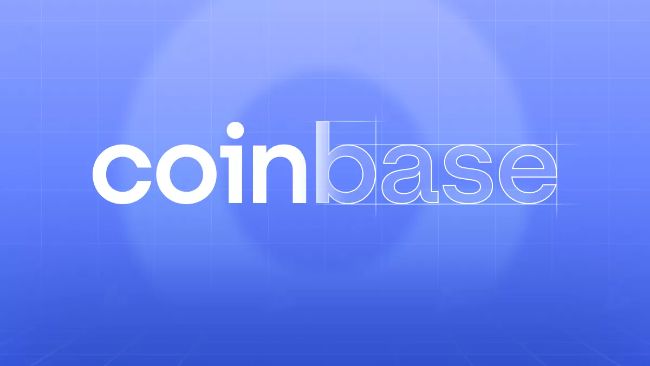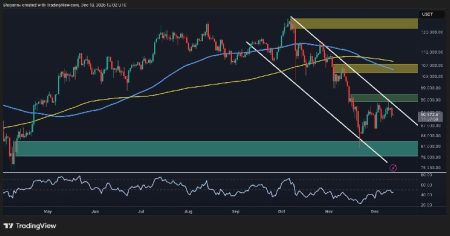Coinbase Reshapes Crypto Payments Landscape with New Debit Card Limits
Significant Spending Limit Changes Signal Growing Mainstream Acceptance of Cryptocurrency Transactions
In a move that could significantly transform how consumers interact with digital currencies in everyday transactions, Coinbase has announced sweeping changes to its debit card spending limits. The cryptocurrency exchange giant will implement a default $5,000 spending cap beginning October 14, 2025, while opening pathways for qualified customers to access substantially higher limits—up to $100,000—under a newly developed risk-based assessment model.
This strategic shift, detailed in an official announcement from Coinbase Help, represents one of the industry’s most ambitious attempts to bridge the gap between cryptocurrency holdings and practical daily spending. The tiered limit structure aims to balance growing consumer demand for seamless crypto payment options with appropriate risk management protocols that maintain the integrity of the financial ecosystem.
“This update reflects the maturing cryptocurrency payment infrastructure and growing consumer confidence in digital asset spending,” explains financial technology analyst Marisa Hernandez. “Higher spending thresholds remove a significant friction point that has historically limited cryptocurrency’s utility for larger purchases, from luxury goods to travel bookings.”
Sophisticated Risk-Based Model Determines Individual Spending Capacities
At the core of Coinbase’s new approach lies a sophisticated risk assessment framework designed to evaluate customers based on multiple factors rather than implementing universal restrictions. The system combines automated screening technology with detailed account history analysis and compliance verification to sort users into appropriate spending tiers.
The company appears to be walking a delicate balance—expanding payment capabilities for trustworthy customers while maintaining robust fraud controls. Users with clean transaction histories, comprehensive identity verification, and consistent platform usage patterns will likely qualify for the higher spending thresholds more rapidly than newer or less established accounts.
“Risk-based models represent the gold standard in financial services,” notes cybersecurity expert James Wilson. “Traditional banks have used similar systems for decades. What’s innovative here is applying these frameworks to cryptocurrency transactions, which have unique risk profiles compared to traditional payment rails.”
Coinbase will likely calibrate its tier thresholds after collecting several quarters of operational data, an approach that typically helps financial services providers reduce false positives in fraud detection while maximizing legitimate customer activity. Industry observers expect the company to closely monitor chargeback rates and dispute frequencies as customers migrate between spending tiers.
Market Impact: Accelerating Mainstream Cryptocurrency Payment Adoption
The higher spending limits could significantly accelerate cryptocurrency’s transition into mainstream payment channels by eliminating practical barriers that have previously forced users to split larger transactions or avoid using crypto altogether for substantial purchases.
“When consumers face artificial spending caps, they often abandon the payment method entirely rather than dealing with the inconvenience,” explains retail payment systems consultant Elena Rodriguez. “By raising these ceilings, Coinbase removes a key obstacle to everyday crypto usage, particularly for higher-value transactions like electronics, furniture, or travel bookings.”
While the enhanced limits represent a significant step forward, experts note that broader merchant acceptance and volatility management remain central challenges for widespread adoption. Retailers continue to express concerns about cryptocurrency price fluctuations between the time of transaction approval and settlement, though technological solutions offering instant conversion to fiat currencies have mitigated some of these worries.
The implications extend beyond retail consumers to institutional participants as well. Professional traders stand to benefit from more efficient off-ramp options for converting trading profits into spendable funds, while financial institutions exploring cryptocurrency integration gain additional pathways for building client-facing payment services.
“What’s particularly significant is how this move signals exchanges scaling their payment infrastructure,” notes institutional blockchain strategist Michael Chen. “This has downstream effects on custody services, treasury operations, and even on-chain liquidity dynamics as more value flows through card-based payment channels rather than traditional exchange withdrawals.”
Maximizing Card Privileges: Strategies for Users
For Coinbase customers eager to access higher spending limits, the company recommends a clear roadmap focused on demonstrating account reliability and adhering to platform guidelines. Users seeking increased privileges should prioritize completing enhanced verification procedures, maintaining low-risk activity patterns, and utilizing recommended security features.
The platform’s risk assessment algorithms evaluate numerous factors, including:
- Completion status of know-your-customer (KYC) verification steps
- Activation of advanced security features like two-factor authentication
- Consistency and compliance in transaction patterns over time
- Account longevity and established usage history
- Geographic location and associated regulatory requirements
Importantly, Coinbase has indicated that these updates specifically target spending limits rather than altering fundamental deposit or withdrawal capabilities. Users should verify their personalized limits directly within their account dashboards, as these thresholds can vary significantly based on jurisdiction, account history, and regulatory requirements.
“Consumers often confuse spending limits with withdrawal limits, but they serve different purposes within the financial ecosystem,” clarifies consumer finance attorney Sarah Thompson. “Spending limits govern point-of-sale transactions, while withdrawal limits typically relate to moving funds from the platform to external accounts or converting to cash. Coinbase appears to be specifically addressing the former with this policy update.”
Expert Analysis: Balancing Opportunity with Risk Management
Financial analysts view Coinbase’s limit adjustment as a pragmatic evolution that could stimulate increased cryptocurrency usage without substantially elevating systemic risk, provided that accompanying security controls remain effective. The higher thresholds acknowledge the growing legitimacy of cryptocurrency as a payment method while implementing appropriate safeguards.
Some security experts caution that higher limits might attract more sophisticated fraud attempts, emphasizing the importance of enhanced oversight mechanisms. The delicate balance between expanding access and maintaining security will likely remain under close scrutiny from both industry observers and regulatory authorities.
“The key question isn’t whether higher limits are good or bad in isolation, but whether the risk management infrastructure has evolved proportionally,” notes financial crimes prevention specialist Thomas Baker. “Effective fraud detection systems must scale alongside transaction limits, particularly as larger values become possible.”
The Bank for International Settlements has previously highlighted the importance of resilient payment infrastructure when expanding cryptocurrency payment channels, emphasizing that consumer protection standards should remain consistent regardless of the underlying technology facilitating transactions.
Broader Implications for the Cryptocurrency Ecosystem
The ripple effects of Coinbase’s policy change extend far beyond the company’s immediate user base. Higher card limits make cryptocurrency payments more practical for both everyday purchases and significant transactions, potentially accelerating merchant adoption rates and influencing how payment processors, digital wallets, and competing exchanges design their services.
“Payment limits have been a somewhat hidden constraint on cryptocurrency’s practical utility,” explains digital economy researcher Dr. Amanda Liu. “By addressing this friction point, Coinbase is effectively challenging other market participants to reconsider their own restrictions or risk losing transaction volume to platforms with more consumer-friendly policies.”
The move represents a significant step toward realizing cryptocurrency’s potential as a genuine payment solution rather than merely a speculative investment vehicle. As spending capabilities expand, merchants may find stronger business cases for integrating cryptocurrency payment options, particularly for higher-value goods and services where transaction fees represent a smaller percentage of the total sale.
For the average consumer, these changes translate to greater flexibility in how they utilize their digital assets, reducing the artificial separation between cryptocurrency holdings and everyday financial life. This integration marks another milestone in cryptocurrency’s gradual evolution from a niche technological curiosity to an increasingly normalized component of the broader financial landscape.
As implementation approaches, both users and market participants should monitor how these higher limits influence transaction patterns, merchant adoption rates, and regulatory responses across different jurisdictions. The initiative’s success will ultimately depend not just on Coinbase’s technical implementation, but on the broader ecosystem’s ability to deliver secure, compliant, and frictionless payment experiences at these expanded transaction scales.














